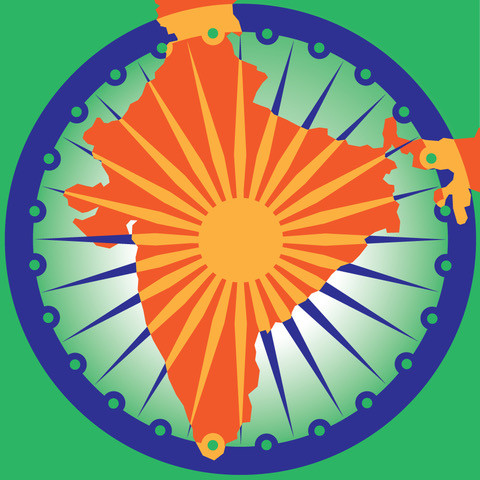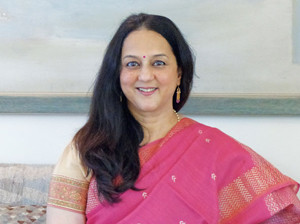
Author and former journalist by choice, and shareholder of IT giant Infosys by chance, Rohini Nilekani entered philanthropy two decades ago when she began providing financial support for young girls. Today, her philanthropy is at work across Indian society, through the Akshara Foundation, which makes education accessible in government-run primary schools; Arghyam, which supports organizations in groundwater and sanitation; and other initiatives in governance, independent media, and the arts. She believes that one of the important things that a complex country like India needs is an intellectual infrastructure of ideas; of brave pilot programs of soaring ambition; and of think tanks battling poverty, class, and disease. In the following conversation with Neera Nundy, Dasra co-founder, and Pakzan Dastoor, manager of advisory research and due diligence at Dasra, Nilekani speaks about her evolution as a philanthropist, the critical role of women in giving, and why Indian philanthropy needs to be more audacious.
Neera Nundy and Pakzan Dastoor:
When did you first become engaged in philanthropy?
Rohini Nilekani: My giving started a long time ago when I didn’t have that much to give in terms of money. I began by supporting young girls with scholarships. It wasn’t until around 2004 when we [Rohini and her husband, Nandan Nilekani] came into serious wealth that I could begin to call what we do philanthropy, rather than traditional charity. I then had to find a way to be more strategic in my giving, so in 2005 I decided that Arghyam [a foundation she started in 2001] would focus entirely on the water sector in India. That’s when my personal strategic philanthropy started. It was a steep learning curve because like many others who do philanthropy, we were not familiar with the sector we decided to invest in—water. We had to spend a lot of time getting familiar with the sector and figuring out the best way to leverage our resources so that we would have a disproportionately beneficial social impact. (See “Case Study: Arghyam.”)
 Philanthropist Rohini Nilekani.
Philanthropist Rohini Nilekani.
You have been very forthcoming about your philanthropy, something that not many philanthropists in India are. Why is it important to talk about your philanthropy?
The philanthropy sector in India is just a few decades old. So it’s not a conversation that people have with each other. In the West, the rich do talk about their philanthropy, both in their own circles and publicly. That needs to happen in India as well. People need to use their circles of influence to talk about how wealth in India should be used. We live in a country where there are 600 million people waiting to be in the same room as us, so the responsibility of the wealthy in India is very different from other countries in the West. People need to talk a lot more about how they are using their wealth for the public good, and make that an intellectually and socially interesting way of being wealthy.
What are some of the biggest barriers to giving in India today?
There are of course personal reasons why people don’t give, but there are also things that can be done in the ecosystem and through policy that will open up the philanthropic sector in India. If you look at policy, other countries do things like have an inheritance tax, which certainly causes the purse strings to open up rapidly. But I am not sure if India is ready for that now.
Other things can be done to make it easier to set up nonprofit institutions and reduce the regulatory cholesterol around them. Today we are seeing a crackdown on nonprofits by making it difficult for nonprofits to do political work. That is a mistake. After all, if you want to change things in society, a lot of the work is going to be political, not in the traditional sense of political parties, but political grassroots work. Whichever government is in power needs to feel secure enough to allow nonprofits to do human rights-based political work. We also need ecosystem players to come in, who can build the capacity of the nonprofit sector and draw more professionals into it.
How do you go about choosing the causes you give to?
I believe in supporting people with high commitment, with very good ideas and good integrity, in areas where I can see a possibility of real change happening. At whatever scale the people are working in, if I see real commitment, if I can see the power of those people and their ideas, and I can see they are building good institutions, I feel very tempted to go into that sector. I often need to hold myself back. The areas I have funded, apart from education and water, are the environment, access to justice, independent media, cultural arts—because that is a huge area that is underfunded in India—and a few other exciting spaces, like policy advocacy and think tanks.
I believe India needs to build out its intellectual infrastructure. It is the most complex country in the world to manage. Governments can’t do things alone. They need ideas. They need pilots that are executed outside government. They need evidence to make better policy and better law. Philanthropic capital—especially domestic philanthropic capital—is best suited to help build out a whole new range of institutions, like think tanks and evidence-making institutions, that do research and advocacy that can feed into effective policy.
Could you talk about your experiences working with the government?
Many of the societal problems that philanthropic capital aims to play a role in solving often have to do with public services, whether it is water, health, sanitation, or education. These services are often either provided by the state or regulated by the state. So when philanthropists come in and work in any of these areas, at some point they will encounter the state in one form or another. Look at Arghyam, for example. You cannot work in water, which is a kind of public service that we mostly depend on the state to provide, and stay away from negotiating with the state. If you’re serious in your work, you will inevitably encounter some policy areas that you want to have an influence on. It is very important for philanthropists to start thinking about this from the get-go. So when you design your philanthropy, think about the role that the state plays in that particular sector.
Having said that, it is not easy to work with the government. It is much easier, for example, to identify five students that you want to help with scholarships and not have to worry about education policy. But if you want to do anything at scale, if you want to have real impact beyond your own resources and your own philanthropy, then you have to creatively and patiently engage with the state.
What is the role of women in family giving in India today?
Sometimes women who have not been working outside the home, because they have been homemakers and doing the other important things to build a family, wonder if it is okay to be philanthropic with the family wealth because it isn’t their personal wealth. I believe that women should not hesitate to be philanthropic with the family wealth. Once there is a consensus within the family to engage in philanthropy, women should be bold: They should use their passion, they should use their heart, they should use their time, and they should use their imagination. Giving forward sets as much of a tone for the family, for the children, and for the future as any other thing that you would do together. In fact, it’s more important. So I think that we should get over this now. After all, everybody contributes to the accumulation of wealth in a family, and women should not hesitate to give. Besides, it is really so much fun—intellectually, spiritually, mentally—there is just so much joy in giving that it can’t but be good for the family to get engaged.
If there was one thing you would like to see Indian philanthropists do differently, what would that be?
I worry sometimes that Indian philanthropy is not edgy enough. Not taking enough risks. Not grappling with the bigger problems. Let’s take a really big problem like climate change. In 10 years, if some of these climate predictions come true, can you imagine what will be happening in North India? If the monsoon patterns change, can you imagine how that will impact the lives of millions of people in this country? Wouldn’t it be great if Indian philanthropy looked out 10 years and asked: What are the big and audacious things that we can start tackling now? I worry that Indian philanthropy will get stuck tinkering on the sidelines, a little bit of incremental work in education, a little bit of incremental work in health, and not tackle the really big problems that we face.
I believe that we do know how to tackle big problems. If all the people who were so creative as to build these huge business empires, applied a little bit of that attention to the big problems that are facing this country, I am sure it would yield much more innovative philanthropy. We don’t have to copy the West. Today we have problems in India that the West never faced. We have to build an indigenous model of innovative philanthropy taking bigger risks, taking the risk of collaboration, being more audacious, and giving more. That’s what will make this country go forward in a way that is different from the bad predictions of what will happen in the future. We have a huge responsibility on our shoulders, and we should enjoy taking it on!
Support SSIR’s coverage of cross-sector solutions to global challenges.
Help us further the reach of innovative ideas. Donate today.
Read more stories by Neera Nundy & Pakzan Dastoor.

